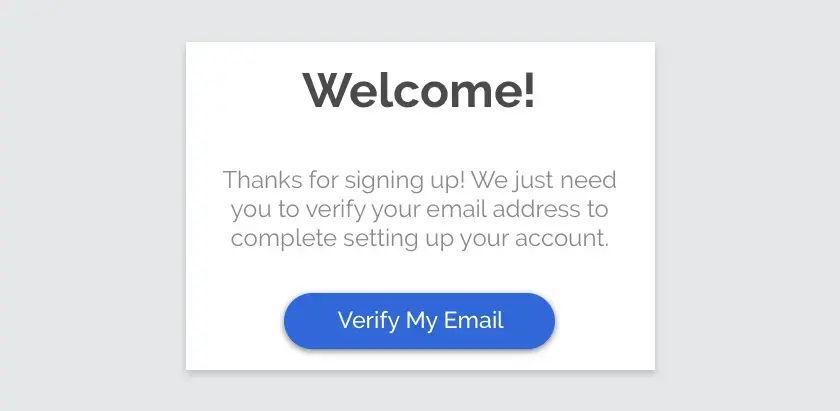Many modern web applications require users to verify their email address at one point or another. This is especially important when you have a billing process that sends receipts to your users. We can easily add this feature to applications with Elixir and Phoenix.
The Basic Flow
We’ll assume that the row that has the email address also has a verified boolean field or something equivalent.
- A user registers or adds an email to their account
- Your application generates a unique token that is tied to the user
- An email is sent to the user’s email address with a link to click
- User navigates to link in their browser and has their email address verified
The Verification Endpoint
Let’s stub out some code for the new route. Create a new action in your controller:
defmodule MyAppWeb.UserController do
use MyAppWeb, :controller
# Your other actions
def verify_email(conn, params) do
# We'll update this later
end
end
Tie the action to a route in your router:
scope "/", MyAppWeb do
# ...
get "/verify", UserController, :verify_email
end
Generating a Unique Token
When you generate your token, you’ll want to make sure that the token doesn’t leak account information during the verification process as well as having the token expire after a certain duration. For us, Phoenix already comes with a module to help us in this area; Phoenix.Token. We can use Phoenix.Token to create a signed token that can be tied to a specific user and can enforce an expiration.
Here’s how we can generate the token with Phoenix.Token.sign/4:
defmodule MyApp.Token do
@moduledoc """
Handles creating and validating tokens.
"""
@account_verification_salt "account verification salt"
def generate_new_account_token(%User{id: user_id}) do
Phoenix.Token.sign(MyAppWeb.Endpoint, @account_verification_salt, user_id)
end
end
You’ll want to update your user registration endpoint to generate the token and email the user with the link. You can use your router’s path helpers to create the link.
defmodule MyAppWeb.UserController do
use MyAppWeb, :controller
def create(conn, params) do
# ...
token = MyApp.Token.generate_new_account_token(user)
verification_url = user_url(conn, :verify_email, token: token)
MyApp.Notifications.send_account_verification_email(user, verification_url)
# ...
end
end
Verifying the token
Now that we can send a signed token to a user, we need to verify the token and then mark the user as verified. Let’s go back and update our UserController and Token modules to verify our signed token. We will use Phoenix.Token.verify/4 to verify our tokens.
defmodule MyApp.Token do
# ...
def verify_new_account_token(token) do
max_age = 86_400 # tokens that are older than a day should be invalid
Phoenix.Token.verify(MyAppWeb.Endpoint, @account_verification_salt, token, max_age: max_age)
end
end
defmodule MyAppWeb.UserController do
use MyAppWeb, :controller
# ... Your other actions
def verify_email(conn, %{"token" => token}) do
with {:ok, user_id} <- MyApp.Token.verify_new_account_token(token),
{:ok, %User{verified: false} = user} <- MyApp.Users.by_id(user_id) do
MyApp.Accounts.mark_as_verified(user)
render(conn, "verified.html")
else
_ -> render(conn, "invalid_token.html")
end
end
def verify_email(conn, _) do
# If there is no token in our params, tell the user they've provided
# an invalid token or expired token
conn
|> put_flash(:error, "The verification link is invalid.")
|> redirect(to: "/")
end
end
Wrap Up
Leveraging Phoenix’s Token module, we created a straightforward method of adding a user email verification feature.


